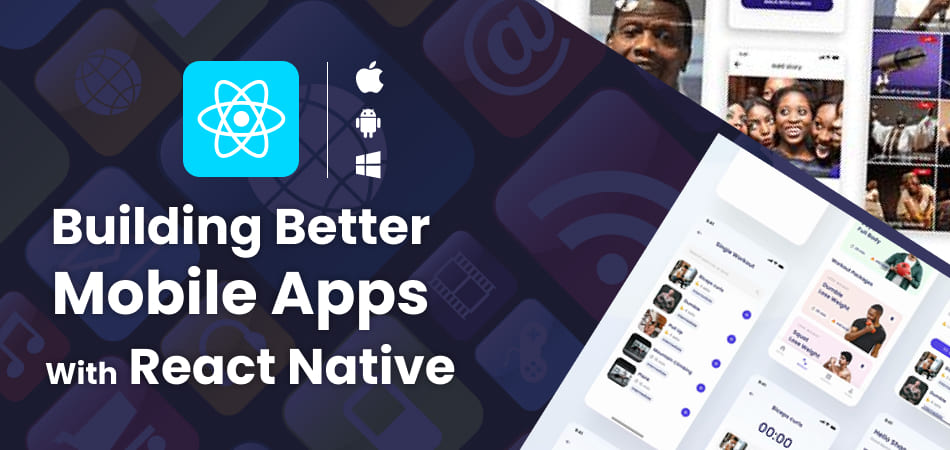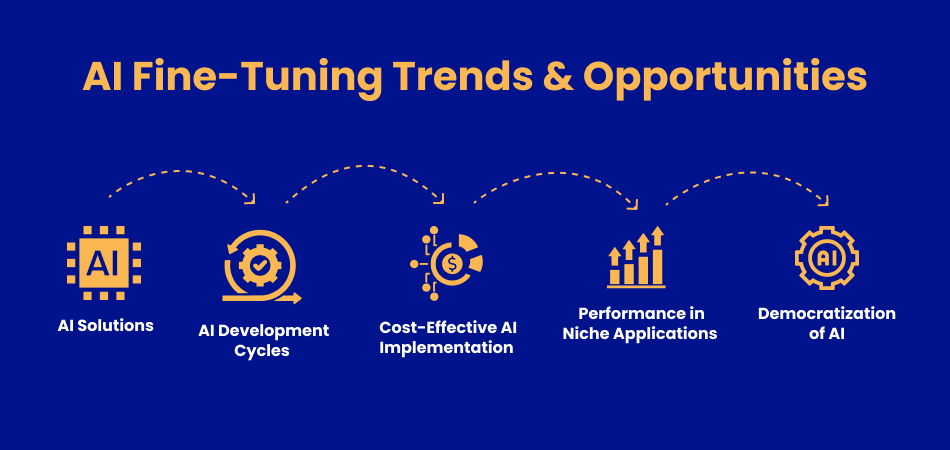Mobile app development has come a long way, with various frameworks and tools making the process more efficient and effective. Among these, React Native stands out as a powerful framework that enables developers to build high-quality mobile apps with ease. This article delves into React Native, its benefits and drawbacks, and why it is an excellent choice for mobile app development.
Introduction to React Native
Facebook developed the open-source React Native framework to let developers create mobile applications with React and JavaScript. It drastically cuts down on development time and effort by enabling developers to create code only once and have it run on both the iOS and Android platforms. React Native uses native components rather than web components, providing a more native look and feel to the apps.
Key Features of React Native:
- Cross-Platform Compatibility: Write code once and run it on both iOS and Android.
- Hot Reloading: Allows developers to see the changes they make in real-time without restarting the app.
- Native Modules: Access to native functionalities like camera, location, etc., through native modules.
- Large Community Support: A vast community of developers and a rich ecosystem of libraries and tools.
Benefits
React Native offers several advantages that make it a popular choice for mobile app development:
1. Cross-Platform Development
Developers may create a single codebase that runs on both iOS and Android by using React Native. This significantly reduces the time and cost of development and ensures consistency across platforms.
2. Performance
Apps made with React Native are renowned for their speed. Unlike hybrid apps that rely on WebView, React Native uses native components, which results in smoother and faster performance.
3. Reusable Components
The component-based architecture of React Native enables developers to create encapsulated components that are capable of state management. These components can be reused across different parts of the application, enhancing code maintainability and scalability.
4. Hot Reloading
The hot reloading feature in React Native enhances the development experience by allowing developers to see changes in real-time without recompiling the entire app. This speeds up the development process and helps in faster debugging.
5. Large Community and Rich Ecosystem
There is a sizable and vibrant developer community for React Native.Tools for profiling can also be used to find and address performance problems.This means ample resources, tutorials, libraries, and third-party plugins are available to help developers overcome challenges and implement new features.
6. Cost-Effective
Since React Native allows for code reuse across platforms, it reduces the need for separate development teams for iOS and Android. This cost-saving is especially beneficial for startups and small businesses.
7. Strong Backing
React Native is backed by Facebook and is used by several large companies, including Instagram, Airbnb, and Walmart. This backing ensures that the framework is continuously improved and updated with new features and optimizations.
Drawbacks (and How to tackle them)
Despite its many advantages, React Native does have some drawbacks. However, most of these can be mitigated with the right approach and tools.
1. Performance Issues
While React Native offers near-native performance, there can be performance bottlenecks for highly complex applications.
Solution: Optimize performance by using native modules for performance-critical parts of the application. Tools for profiling can also be used to find and address performance problems.
2. Limited Customization
Some native functionalities might not be available out-of-the-box with React Native.
Solution: Use native modules or third-party libraries to access the required native functionalities. If necessary, write custom native code and bridge it with React Native.
3. Learning Curve
For developers new to React and JavaScript, there can be a learning curve.
Solution: Invest time in learning React and JavaScript fundamentals. There are plenty of tutorials, courses, and documentation available to help developers get up to speed.
4. Debugging
Debugging in React Native can sometimes be challenging, especially with complex applications.
Solution: Use advanced debugging tools like Reactotron, Flipper, and integrated development environment (IDE) extensions to streamline the debugging process.
5. Lack of Some Native Features
Certain platform-specific features might not be available in React Native, requiring native development.
Solution: Use native code for specific features that are not supported by React Native. This can be done by creating native modules and integrating them with the React Native application.
Why Would You Choose to Create Mobile Apps Using React Native?
React Native offers a compelling proposition for mobile app development, combining the efficiency of JavaScript with the performance of native code. Here are some key reasons why you should consider React Native for your next mobile app project:
Faster Development and Time-to-Market
React Native’s cross-platform capabilities allow developers to write code once and deploy it on both iOS and Android, significantly speeding up the development process. This results in rapid time-to-market, which is vital in today’s competitive landscape.
Enhanced User Experience
React Native uses native components, which results in a better user experience compared to hybrid frameworks that rely on WebView. The apps feel smoother and more responsive, providing users with a seamless experience.
Cost Savings
By using a single codebase for both platforms, React Native reduces the need for separate development teams for iOS and Android. This leads to significant cost savings in terms of development and maintenance.
Strong Community and Ecosystem
React Native has a vibrant community of developers who contribute to its growth by creating libraries, tools, and plugins. This rich ecosystem ensures that developers have access to a wide range of resources, making it easier to build feature-rich applications.
Scalability and Maintainability
The component-based architecture of React Native promotes code reusability and modularity. This makes the codebase more maintainable and scalable, allowing developers to add new features and functionalities without overhauling the entire application.
Robust Performance
React Native offers near-native performance by using native components and optimizing JavaScript execution. This ensures that the apps are fast, responsive, and capable of handling complex tasks.
The Following Component-Based Architecture is Recommended for You:
Implementing a well-structured architecture is crucial for the success of any mobile application. Here is a recommended component-based architecture for React Native applications:
1. Component Hierarchy
Organize your components in a hierarchical manner. Start with high-level components that define the layout and structure, and then create lower-level components that handle specific functionalities.
2. Stateful and Stateless Components
Differentiate between stateful and stateless components. Stateful components manage their state and handle complex logic, while stateless components rely on props and focus on rendering the UI.
3. Container and Presentational Components
Separate your components into container and presentational components. Container components handle the business logic and data fetching, while presentational components focus on displaying the UI.
4. Reusable Components
Make reusable elements that can be applied to many areas of the program.This enhances code reusability and maintainability.
5. Redux for State Management
Use Redux for managing the application state. Redux provides a predictable state container and helps in managing the state of the application in a scalable and maintainable manner.
6. Navigation
Use React Navigation for handling navigation within the application. React Navigation provides a robust and flexible solution for managing navigation and routing.
7. Styles and Themes
Keep your styles and themes modular and reusable. Use libraries like Styled Components or Emotion to create consistent and maintainable styles.
8. Testing
Implement a comprehensive testing strategy. Use tools like Jest and Enzyme for unit testing, and Detox for end-to-end testing.
Detailed Explanation
Here is a table summarizing the recommended component-based architecture:
| Component Type | Description |
| High-Level Components | Define the overall layout and structure of the application. |
| Stateful Components | Manage their state and handle complex logic. |
| Stateless Components | Rely on props and focus on rendering the UI. |
| Container Components | Handle business logic and data fetching. |
| Presentational Components | Focus on displaying the UI. |
| Reusable Components | Enhance code reusability and maintainability. |
| Redux for State Management | Manage the application state in a scalable and maintainable manner. |
| React Navigation | Handle navigation and routing within the application. |
| Styles and Themes | Keep styles modular and reusable. |
| Testing | Implement a comprehensive testing strategy. |
Conclusion
React Native has revolutionized the way mobile applications are developed, offering a perfect blend of efficiency and performance. Its cross-platform capabilities, combined with a strong community and rich ecosystem, make it an excellent choice for building high-quality mobile apps.
While there are some drawbacks, most of them can be mitigated with the right approach and tools. By opting for React Native, you can significantly reduce development time and costs, enhance user experience, and ensure your application is scalable and maintainable.
Implementing a well-structured component-based architecture further ensures that your application is robust and easy to manage. With its numerous benefits, React Native stands out as a powerful framework for building better mobile apps that meet the demands of today’s users.
Embrace React Native for your next mobile app project and experience the advantages of faster development, cost savings, and enhanced user satisfaction.



